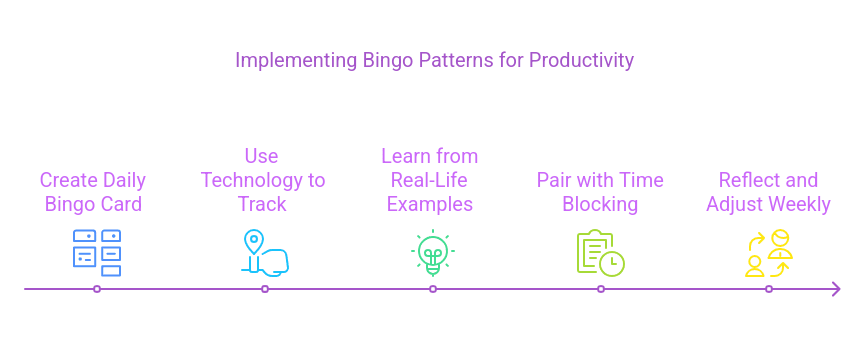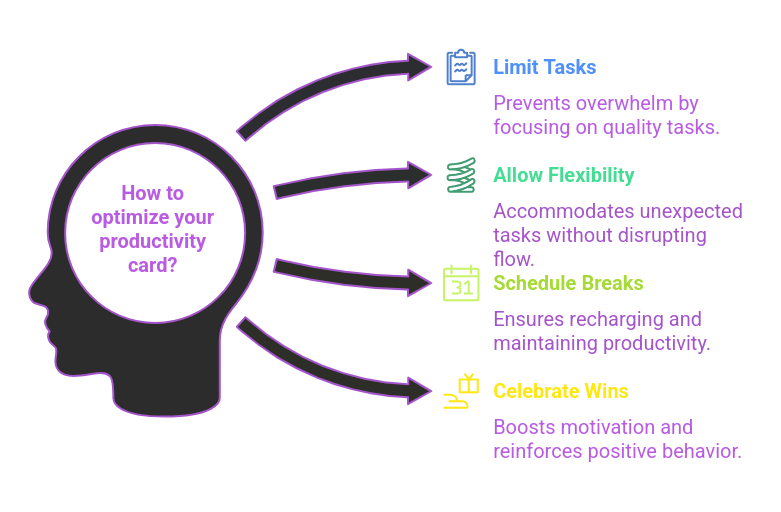How Bingo Patterns Can Revolutionize Your Daily Productivity
Introduction
In today’s fast-paced world, women often juggle multiple roles—career, family, and personal growth. Staying productive and efficient can feel overwhelming. But what if the secret to mastering efficiency lies in an unexpected place: bingo patterns? Yes, you read that right! Bingo patterns, often associated with leisure and fun, can teach us valuable lessons about focus, strategy, and time management. In this blog post, we’ll explore how bingo patterns can unlock your productivity potential. You’ll discover actionable strategies to help you master efficiency in every aspect of your life. By the end of this article, you’ll have a fresh perspective on productivity and practical tips to implement immediately. Let’s dive in!
What Are Bingo Patterns, and How Do They Relate to Productivity?
Bingo patterns are more than just a game mechanic; they’re a metaphor for structured thinking and strategic planning. In bingo, players focus on completing specific patterns in order to win. Similarly, you can apply this principle to your daily tasks. The focus keyword, bingo patterns, represents the idea of identifying and completing tasks systematically, ensuring nothing falls through the cracks. This approach is especially helpful for women who often multitask and need a clear framework to stay organized and efficient.
Think of your day as a bingo card. Each square represents a task, and your goal is to complete a pattern—whether it’s a straight line, a diagonal, or a full card. By breaking your workload into smaller, manageable tasks, you can stay focused and motivated. The beauty of bingo patterns lies in their simplicity and adaptability. Whether you’re managing a busy household, running a business, or pursuing personal goals, this system can work for you.
Key Strategies to Master Efficiency Using Bingo Patterns
1. Use Visual Organization to Stay on Track
Bingo cards are visually structured, making it easy to track progress. You can use tools like Kanban boards or color-coded calendars to organize tasks and prioritize effectively.
Example: Create a “productivity bingo card” with tasks for the week. As you complete each task, mark it off. This visual progress can boost motivation and clarity.
Expert Insight: Productivity coach Marie Forleo says, “Visualizing your tasks helps you see the bigger picture and stay motivated. It’s like having a roadmap for your day.” For more on visual task management, check out Trello’s Guide to Kanban Boards.
2. Prioritize Tasks with Pattern Recognition
In bingo, players focus on specific patterns in order to win. Apply this to your work by identifying recurring tasks or patterns in your workflow. Prioritize tasks that align with your goals.
Example: If you notice you’re spending too much time on emails, create a pattern (e.g., checking emails only at set times) to regain control of your schedule.
Case Study: A Harvard Business Review study found that employees who used pattern-based task management systems reported a 25% increase in productivity. Read the full study here: HBR on Productivity Patterns.
3. Gamify Your Productivity for Fun and Motivation
Bingo is inherently enjoyable because it’s a game. You can gamify your tasks by setting small rewards for completing patterns or achieving milestones.
Example: Treat yourself to a coffee break after completing a row of tasks on your productivity bingo card.
Pro Tip: Use apps like Habitica to turn your tasks into a game, earning points and rewards for completing them. Learn more about gamification in productivity from Habitica’s Blog.
4. Foster Collaboration with Shared Goals
Bingo is often played in groups, fostering collaboration. Apply this to your team by creating shared productivity patterns or goals.
Example: Use a shared bingo card for team projects, where each member contributes to completing the pattern.
Expert Insight: Teamwork expert Patrick Lencioni says, “Collaborative goal-setting creates accountability and shared success, which are key to high-performing teams.” For more on team collaboration, explore Lencioni’s Five Dysfunctions of a Team.

Practical Tips for Implementing Bingo Patterns in Your Life
Tip 1: Create a Daily Bingo Card
Design a bingo card with 5×5 squares, each representing a task. Include a mix of high-priority and low-effort tasks to maintain balance.
Example: A freelance writer might include tasks like “write 500 words,” “respond to client emails,” and “take a 10-minute walk.” For more on task prioritization, visit Asana’s Guide to Task Management.
Tip 2: Use Technology to Track Progress
Apps like Trello or Notion can mimic bingo patterns, allowing you to track tasks visually and mark them off as you go.
Example: Create a Trello board with columns representing different days of the week. Move tasks to the “Done” column as you complete them. Learn how to maximize Trello for productivity in this Trello Blog Post.
Tip 3: Learn from Real-Life Examples
Case Study: Sarah, a working mom, used a bingo pattern system to manage her work and family responsibilities. By breaking her day into manageable tasks, she reduced stress and increased productivity by 30%.
Quote from Sarah: “The bingo card system helped me see my progress in real time. It was motivating to mark off tasks and feel a sense of accomplishment.” For more productivity success stories, check out Lifehacker’s Productivity Tips.
Tip 4: Pair Bingo Patterns with Time Blocking
Combine your bingo card with time blocking to allocate specific time slots for each task.
Example: Block 9-10 AM for “write 500 words” and 2-3 PM for “respond to emails.” For a deep dive into time blocking, read Calendar’s Guide to Time Blocking.
Tip 5: Reflect and Adjust Weekly
At the end of each week, review your bingo card to identify patterns in your productivity. Adjust your approach based on what worked and what didn’t.
Example: If you consistently struggle with a particular task, break it into smaller steps or delegate it. For tips on weekly reviews, explore Michael Hyatt’s Weekly Review Checklist.

Common Mistakes to Avoid
Mistake 1: Overloading Your Bingo Card
Avoid filling your card with too many tasks. This can lead to overwhelm and defeat the purpose of structured efficiency.
Solution: Limit your card to 5-7 tasks per day, focusing on quality over quantity. For more tips on task prioritization, check out this guide from MindTools.
Mistake 2: Ignoring Flexibility
Rigid patterns can backfire if unexpected tasks arise.
Solution: Leave a few “wildcard” squares on your bingo card for unplanned activities. Learn more about staying flexible in productivity systems from Todoist’s blog.
Mistake 3: Neglecting Breaks
Just as bingo players take breaks between games, you should schedule downtime to recharge.
Solution: Include “break” squares on your card to ensure you’re balancing productivity with self-care. For insights on the importance of breaks, read this article from Psychology Today.
Mistake 4: Failing to Celebrate Wins
Completing a bingo pattern is a win! Don’t forget to celebrate your achievements, no matter how small.
Solution: Reward yourself with something you enjoy, like a favorite snack or a short walk. Discover the science behind celebrating small wins in this piece from Harvard Business Review.

Expert Insights and Quotes
- James Clear, Author of Atomic Habits: “Small, consistent actions lead to big results. Bingo patterns are a wonderful way to build habits by focusing on incremental progress.”
- Brené Brown, Researcher and Author: “Productivity isn’t about perfection; it’s about progress. Bingo patterns help you see progress in a tangible way.”
- Tim Ferriss, Productivity Guru: “Gamifying your tasks makes them more engaging and less daunting. It’s a simple way to stay motivated.”
Conclusion
Mastering efficiency doesn’t have to be a daunting task. By adopting the principles of bingo patterns, you can transform your productivity approach into a structured, enjoyable, and effective system. Whether you’re a busy professional, a student, or a multitasking mom, these strategies can help you stay organized, focused, and motivated. Start by creating your own productivity bingo card today and experience the difference it makes. Remember, productivity isn’t about doing more—it’s about doing what matters most. Ready to take the next step? Share your bingo pattern success stories in the comments below!
FAQs
- What are bingo patterns, and how do they relate to productivity?
- Bingo patterns are structured layouts used in bingo games. They can be applied to productivity by helping you organize tasks and track progress visually.
- How can I create a productivity bingo card?
- Use a 5×5 grid and fill each square with a specific task or goal. Mark off squares as you complete tasks to track your progress.
- Can bingo patterns help with time management?
- Yes! By focusing on specific patterns or tasks, you can prioritize effectively and avoid wasting time on less important activities.
- Are there tools to help me implement bingo patterns in my workflow?
- Tools like Trello, Notion, or even a simple spreadsheet can help you create and track your productivity bingo card.
- What’s the best way to avoid feeling overwhelmed with bingo patterns?
- Start small. Limit your card to a few tasks per day and gradually increase as you become more comfortable with the system.
- How can I gamify my productivity using bingo patterns?
- Set small rewards for completing rows or patterns on your bingo card. This adds an element of fun and motivation.
- Can bingo patterns be used in team settings?
- Absolutely! Create a shared bingo card for team projects and encourage collaboration to complete the pattern.

